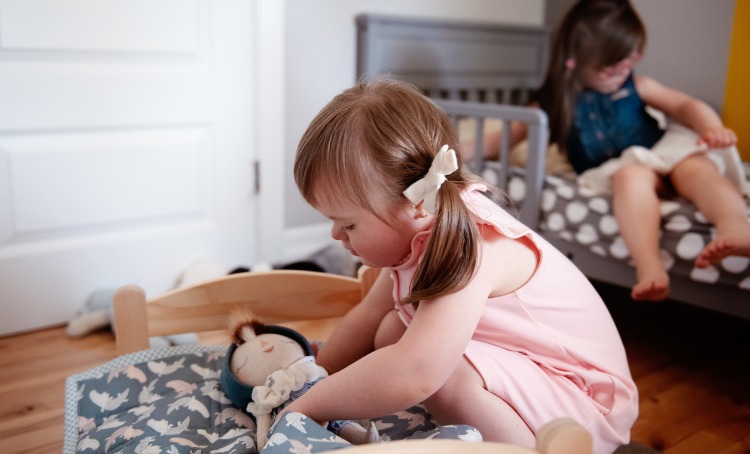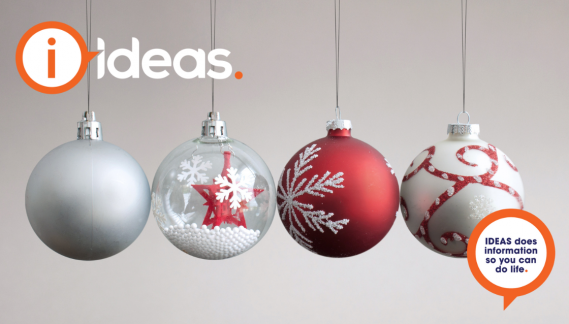We have put together some considerations to help make Christmas more inclusive, hoping you can enjoy it more.
A simple Christmas
Being selective on which events you attend can help routines to be maintained as much as possible. It’s also a refreshing change from a hurried, frazzled season. Children that are old enough can help choose, as long as everyone remembers that some compromise may be necessary.
Countdown
If excitement (or fear) is on the radar, then having a countdown on a printed Calendar is a simple visual tool. Whether you choose a simple version or opt for a full advent style calendar will depend on your family’s preferences. If you opt for a “treat” advent calendar, allergy-friendly versions can be found online too. You can also try making your own, especially if you have family who love to keep their hands busy. Other ideas to fill an advent calendar are written quotes, gestures of kindness to do for others, photos of past years, decorations.

Be prepared
Use Social Stories or pictures of past years to prepare children on what to expect.
Pictures of routines in a visual can also be a tool to reduce stress.
If you are going somewhere, try and stake it out before the Christmas rush.

Delightful Decorations
Recalling last Christmas, our family had a straightforward tree, with about 6 decorations on it. Some were stars made from paddle pop sticks, and I think there was even a macrame feather. It worked for us. It was about the season rather than the quantity.
You might like to have a more abundantly decorated tree, but that doesn’t necessarily work for all family members. Rather than decorating in one big go, hang a few decorations over a week, or the month. This breaks it up, so that it isn’t too much at once. This rule can be beneficial if you have a child with Autism.

Food for thought
If you are hosting, remember to delegate! You do not need the burden on your own. There are ways to share the load, such as asking each family to bring a designated dish or course. Seek their input – if they are not familiar with a dish, it’s not fair for them to try and make it.
Ask in advance, so you have time to prepare if there are dietary needs. For example, if you are catering for someone who has colour avoidance in foods, then this sensory-friendly trifle is a handy one to use.
If you are hosting - serve food that meets guests needs. Be they - sensory-friendly, kosher, halal, vegan, low fodmap, gluten-free, diabetic-friendly or vegetarian dietary needs. Also, check on allergies. Don’t be afraid to ask guests to bring something that meets their needs if you are unsure how to cater to them. Or, ask if they have a favourite recipe you can make for them.
If you have a diverse gathering, place different kinds of foods on separate tables. For example, some cultures or faiths can find it offensive if certain meats are placed near other foods.

Non-alcoholic options
People of various faith's, recovering alcoholics, pregnant women and non-drinkers will appreciate thoughtful beverages. Presentation is a key to making it seem less “every day” and more of a special occasion. Berries or mint are an easy addition to make it pretty.
Lemon Barley Spritzer
- Lemon Barley Cordial
- Soda Water or Sparkling mineral water
- A sprig of mint
- Slice of lime
Mix all, check to taste and add ice cubes. Place in a clear jug and add a note to state it’s non-alcoholic or kid-friendly.

The gift of giving
When shops are overstocked with no room to manoeuver, and the crowds are just too much, you can consider vetoing gift giving. It is certainly worth discussing with people you usually are required to have gifts for. Highlight that the thought goes both ways, and there is no expectation for a gift. Or, if you have a large family, consider a gift on a rotation basis, where you only buy for one person each year, and it swaps around the next. Everyone gets one gift and gives one gift. It can help to put a $ value on it.
There are plenty of options to consider or come up with your own. Think it through and go with a choice that works for your immediate family.

With Thanks
Children should be taught to give thanks. Even if you don’t like or have no use for a gift you have been given. It is good manners to say “Thank you” graciously. Someone has put time, effort and money into choosing a gift, no matter how ill-chosen that gift is.
Packaging for purpose
Consider using gift bags with tissue on top to make “unwrapping” easier for those with fine motor difficulties. This is also a quieter alternative to wrapping paper.
Cardboard boxes with a removable lid can be wrapped in ribbon to secure.
If sensory avoidance or noise from wrapping paper is a consideration, try furoshiki (Japanese cloth wrapping) or drawstring fabric bags. You can watch a video on how to tie furoshiki. It is a reusable option too.
As some children with Autism do not like surprises, having a picture of the item outside the wrapping can help ease anxiety.
To reduce the use of sticky tape and ribbon, you can try this video How to wrap presents without tape or ribbon to learn other ways to wrap.

Take it slow
Like decorating gradually, opening gifts over a week is another good idea to prevent overstimulation.
Not a creature was stirring
Noise and merriment can be too much. Have a quiet, undecorated space to retreat to if the noise gets too much, day or night. Or, only stay for a short and agreed time.

Comfort and care
It’s helpful to take with you a weighted blanket or fidget toy, favourite toy or noise-cancelling headphones to bring comfort.
















